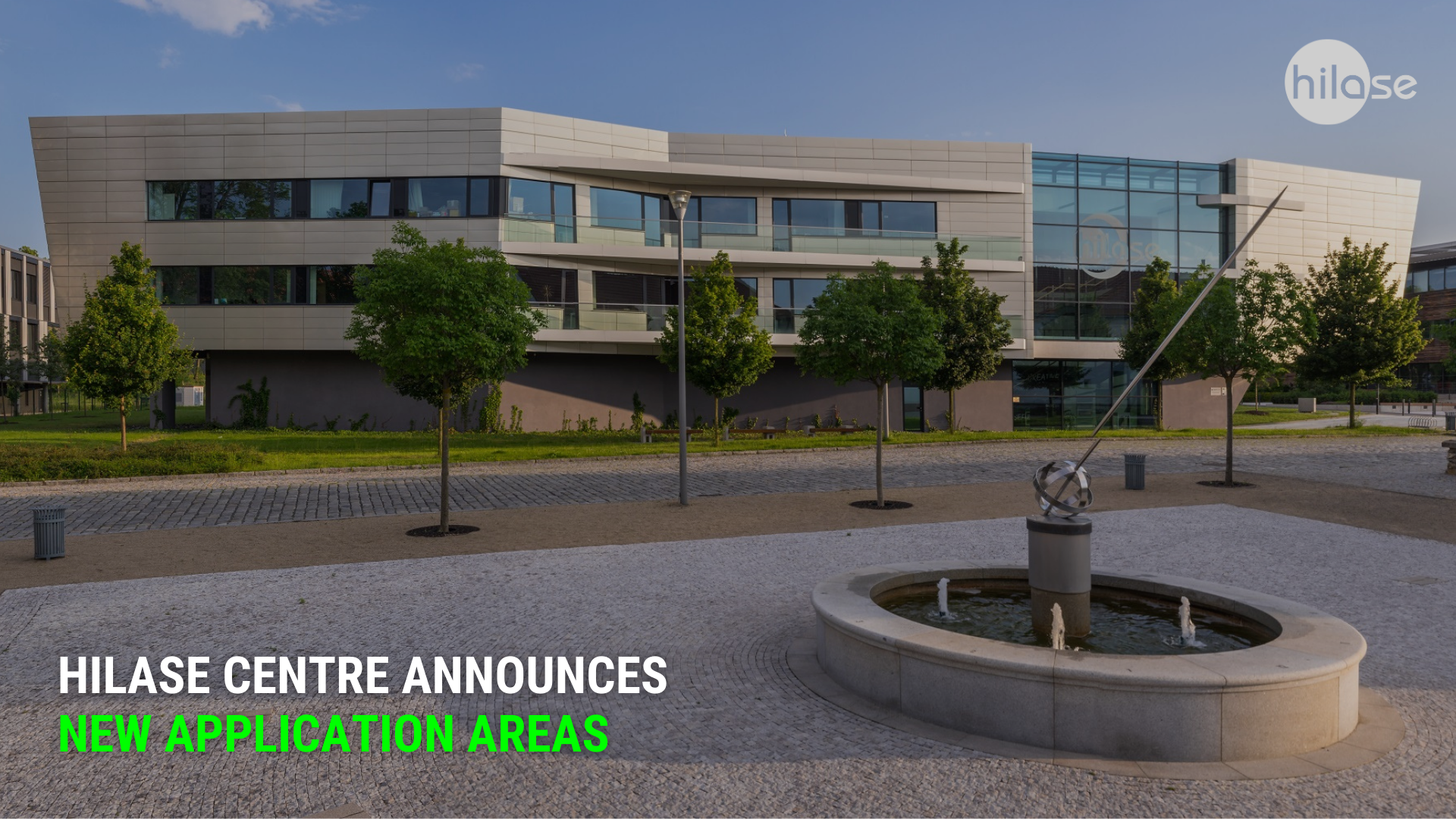Dolni Brezany, Prague, Czechia -- The HiLASE Centre is building what it calls “Superlasers for the real world”. We offer innovative laser technologies and solutions, and effective applications in industry, while constantly pushing the boundaries of laser technology to benefit the Czech and European economy, as well as advancing laser use on Earth and beyond.
At the end of 2022, we presented our new vision and mission for the next decade. This entailed a complete review of our plans, strategies, and objectives for this period.
In view of the dynamic trend in the development of new technologies, including the usability of laser applications, we have decided to define five ambitious application areas in which laser technology will play a major role and which also build on our existing strategic goals, vision, and mission.

- Advanced laser processing and manufacturing technologies
- Space-borne laser technologies
- Smart & Safe Solutions for laser systems and applications
- Laser nanotechnology
- Laser technologies for compact particle and radiation sources
Each area will be presented in more detail by its expert guarantor in the near future, so the following is just a brief overview of the content of these selected areas.
Advanced laser processing and manufacturing technologies are related to the use of high-end lasers together with advanced sensors, feedback control, and machine learning. They include the functionalisation of surfaces using micro and nanostructures, increasing the durability of metallic components and manufacturing components using hybrid technologies, etc.
Functionalisation involves influencing surface properties, such as friction or biocompatibility, using clearly defined structures. It is also about extending the lifetime and improving the safety of critical components by controlling residual surface stresses. In terms of technology, we are talking about the use of LSP (Laser Shock Peening), LMM (Laser Micromachining) and LIDT (Laser Induced Damage Threshold). These technologies can be applied in combination with the development of laser welding or 3D printing. The expert guarantor in this area is Jan Brajer, Head of the Industrial Laser Applications Department.
“All of these areas point to closer cooperation between the HiLASE Centre and other laser centres and partners from synergistic fields, both locally and internationally,” says Tomáš Mocek, Head of the HiLASE Centre, and continues, “A major challenge is the area focused on laser applications in space, which concerns not only research and development of laser sources designed specifically for space use, but also the involvement of cutting-edge optical technologies and electronics for extreme conditions and, of course, artificial intelligence.
“We are considering the use of solid-state and fibre lasers, which nowadays achieve very high optical efficiencies over the whole spectrum of emitted pulse lengths from fs to continuous radiation, thanks to efficient excitation by semiconductor lasers. They can have a peak power of tens of gigawatts at small dimensions, a high-quality beam focusable to micrometre dimensions, high temporal stability, and high energy in the pulse. In the future, Martin Smrž, Head of Advanced Laser Development, will present this area in more detail.”
Jakub Horáček, Head of Engineering and Technical Support, is the expert guarantor of the 3S area (abbreviation for Smart & Safe Solutions), i.e. Smart and Safe Solutions for laser systems and applications. The main directions of this area include, for example, real-time control, which focuses on robust automation, machine vision, the development of robust sensors, and robust electronics in general. Artificial intelligence elements such as autonomous laser alignment and micromachining process optimization.
Automatic active alignment and stabilization of the laser beam. In addition, laser safety, both testing of materials and safety features (such as safety goggles), but also laser training, development of class 1 lasers, risk assessment, and the actual development of safety features such as laser shutters.
Furthermore, the focus is on the reliability of optical components, damage prediction and, last but not least, the management of the laser processing process in order to adapt more quickly to new parts and shapes with sufficient precision and repeatability. Simply put, 3S focuses on implementing technologies and procedures with a focus on ensuring worker and equipment safety in parallel with maximizing the efficiency of laser systems, required equipment and other technologies, increasing productivity, and reducing economic demands.
“Our ambition to be one of the respected leaders in the application of high-power lasers entails a role as an innovator in laser technology. This is also related to the point of view and the search for new application directions. If you have enough courage, know-how, knowledge and experience in the field, a great team of HiLASIANS, a functioning infrastructure and reliable partners, then almost anything is possible.
“Ten years ago, I would not have imagined that thanks to the cooperation with the Brno-based company TRL Space Systems, the largest commercial satellite in the history of the Czech Republic – TROLL – would be sent into orbit next year, where a key component of the LiDAR equipment under development here at HiLASE will be tested. By 2030, the LUGO (Lunar Geology Orbiter) probe should be launched into lunar orbit, which will hopefully include our unique LiDAR for remote sensing of the cave system on the Moon,” predicts Tomáš Mocek.
We will introduce the areas of Laser Nanotechnology and Laser Technologies for Compact Particle and Radiation Sources in the next part of the Introduction of the new application areas.








